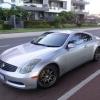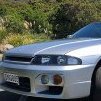"play" In The Driveline
Announcements
-
Similar Content
-
Latest Posts
-
By TurboTapin · Posted
Yes, unfortunately that's the one. Signal was noisy to begin with; after driving once and looking back at the logs I saw pressure constantly swinging between 0-200psi, or staying at 0 randomly for a few seconds. There's a lot of good sensors that share the same look and feel, so don't presume they're all bad. I bought mine for 20$ off Amazon and I should have read the reviews prior, as it's clear they're junk. I purchased a lowdollerr motorsports sensor. -
The casino analogy is spot on too, because no matter how much money or care goes into a build, luck and variables outside your control always play a role.
-
At the end of the day, it comes down to risk tolerance and whether you’re okay with the gamble.
-
wedding eh.....I seem to get to more funerals than weddings or christenings these days....
-
By soviet_merlin · Posted
Yep, cheapest options, neglected and abused. The fastest way to dislike a car is to get assigned that model by a budget rental company
-








Recommended Posts
Create an account or sign in to comment
You need to be a member in order to leave a comment
Create an account
Sign up for a new account in our community. It's easy!
Register a new accountSign in
Already have an account? Sign in here.
Sign In Now